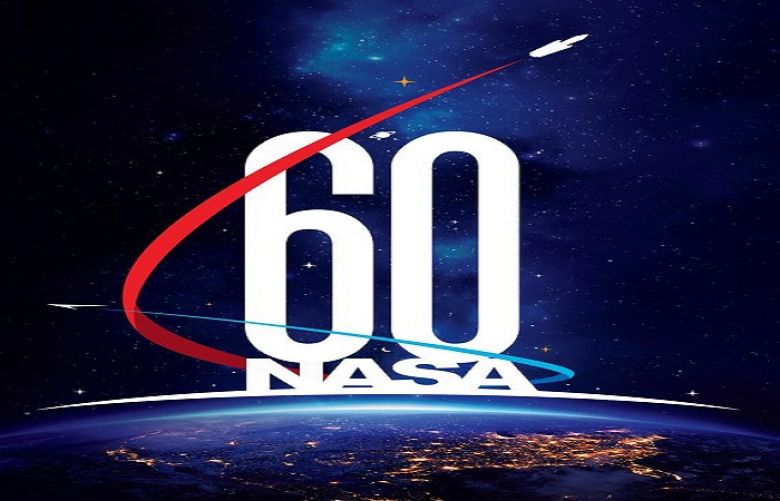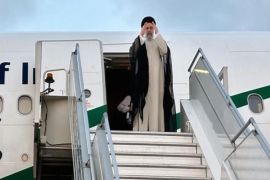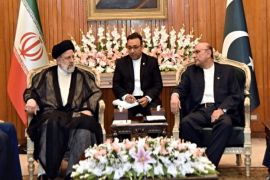The origins of the National Aeronautics and Space Administration can be traced all the way back to the Wright brothers, but the real story happened over less than a year.
That very brief period in the 1950s and the birth of an iconic space agency involves an explosive and embarrassing failure, a "second moon," a canine astronaut and a woman you've never heard of.
Sixty years ago, on July 29, 1958, President Dwight D. Eisenhower signed the National Aeronautics and Space Act into law, paving the way for the official opening of NASA's doors just a few months later, on Oct. 1.
The drive to create an American civilian space agency began with the shocking revelation on Oct. 4, 1957, that the Soviet Union had beaten the US to the punch and launched the first artificial satellite, Sputnik, aboard an intercontinental ballistic missile. The USSR was quick to tout its success in launching Earth's "second moon."
"Sputnik 1 was a phenomenon: You could go see it in your backyard," recalled physicist and engineer Guy Stever, who was on the faculty of MIT at the time, in a 1992 oral history workshop on the origins of the law.
It was the early stages of the Cold War and, suddenly, a demonstration of Soviet technical capability was competing with the premiere of Leave it to Beaver for evening viewing. But it wasn't just the symbolism of the USSR's achievement that raised Americans' anxiety, it was the military implications.
"I remember one of us saying, it wasn't the satellite we were concerned about, it was what got it up there," said Gerald Siegel, who was de facto staff director of the Senate Special Committee on Space and Astronautics in 1958. "Because if you can achieve a missile launch of that magnitude, you can launch a thermonuclear bomb very easily," he added at the 1992 workshop.
This fear only intensified when the much larger and heavier Sputnik II was launched a month later carrying a dog named Laika.
"Even the first Sputnik weighed almost nine times more than the one that we had planned to put up. So there was a feeling of excitement and of crisis," Glen Wilson, also a Senate staffer at the time, recalled for the oral history project.
Insult was added to injury when the American attempt to launch its own satellite, Vanguard TV-3, failed with a spectacular explosion that was broadcast live to the world on Dec. 6, 1957.
By this time, Eisenhower had already made his first public statements calling for a civilian space agency and the cause was taken up by the ambitious Democratic senator from Texas, Lyndon Johnson, who was known for his mastery of the legislative process and would himself become president five years later.
Within weeks of the launch of Sputnik II, the Advanced Research Projects Agency was created within the Department of Defense in an attempt to respond quickly to the Soviet success. ARPA would go on to lay the foundation for the internet and become what is today's DARPA.
But the need for a civilian space agency had become clear to many in Washington, eventually including Eisenhower.
"How many benefits there were to space," recalled Eilene Galloway, a senior national security consultant to Johnson in 1958 who came to be known as the "grand matriarch of space law." "Especially communications, meteorology, and navigation. We could not do all those things under the law in the Department of Defense. We had to set up a civilian agency."
While some obsessed over the military advantages to be gained in space, the scientific benefits of space exploration became clear with the first successful American satellite launch of Explorer 1 on Jan. 31, 1958. Data gathered from that launch led to the discovery of Earth's Van Allen radiation belts.
"Outer space could be used for peaceful purposes," Galloway added in the 2006 interview below. "We then saw that instead of fear of war we could be motivated by hope for peace."
Less than a week after the announcement of the Van Allen belt discovery, Johnson opened a senate committee hearing on the NASA bill, saying:
"Space affects all of us and all that we do, in our private lives, in our business, in our education, and in our Government. We shall succeed or fail in relation to our national success at incorporating the exploration and utilization of space into all aspects of our society and the enrichment of all phases of our life on this earth."
The first line of the law makes it abundantly clear that NASA would serve the vision of peaceful space exploration as Galloway and others conceived it:
"The Congress hereby declares that it is the policy of the United States that activities in space should be devoted to peaceful purposes for the benefit of all mankind."
The final version of the law was signed by Eisenhower on July 29, ordering that the National Advisory Committee for Aeronautics (NACA, started during World War I in 1915) and its facilities in Ohio, Virginia and California become the foundation of NASA a few months later.
Decades later, NASA remains a beacon of peaceful international collaboration, even among rival nations.
"When we walked on the moon, who congratulated us first? The Soviet Union congratulated us," said current NASA administrator Jim Bridenstine at an event celebrating NASA's 60th anniversary on Monday. "Even today ... we've got American astronauts and Russian cosmonauts dependent on each other in the International Space Station."
The signing of the act creating NASA in 1958 was just the beginning of a remarkable journey that continues today. This fall, as NASA celebrates its official 60th birthday on Oct. 1, we'll be looking back on much of that storied history and also looking forward to the next stops on NASA's spacetime itinerary.
Stay tuned and keep looking to the skies.







